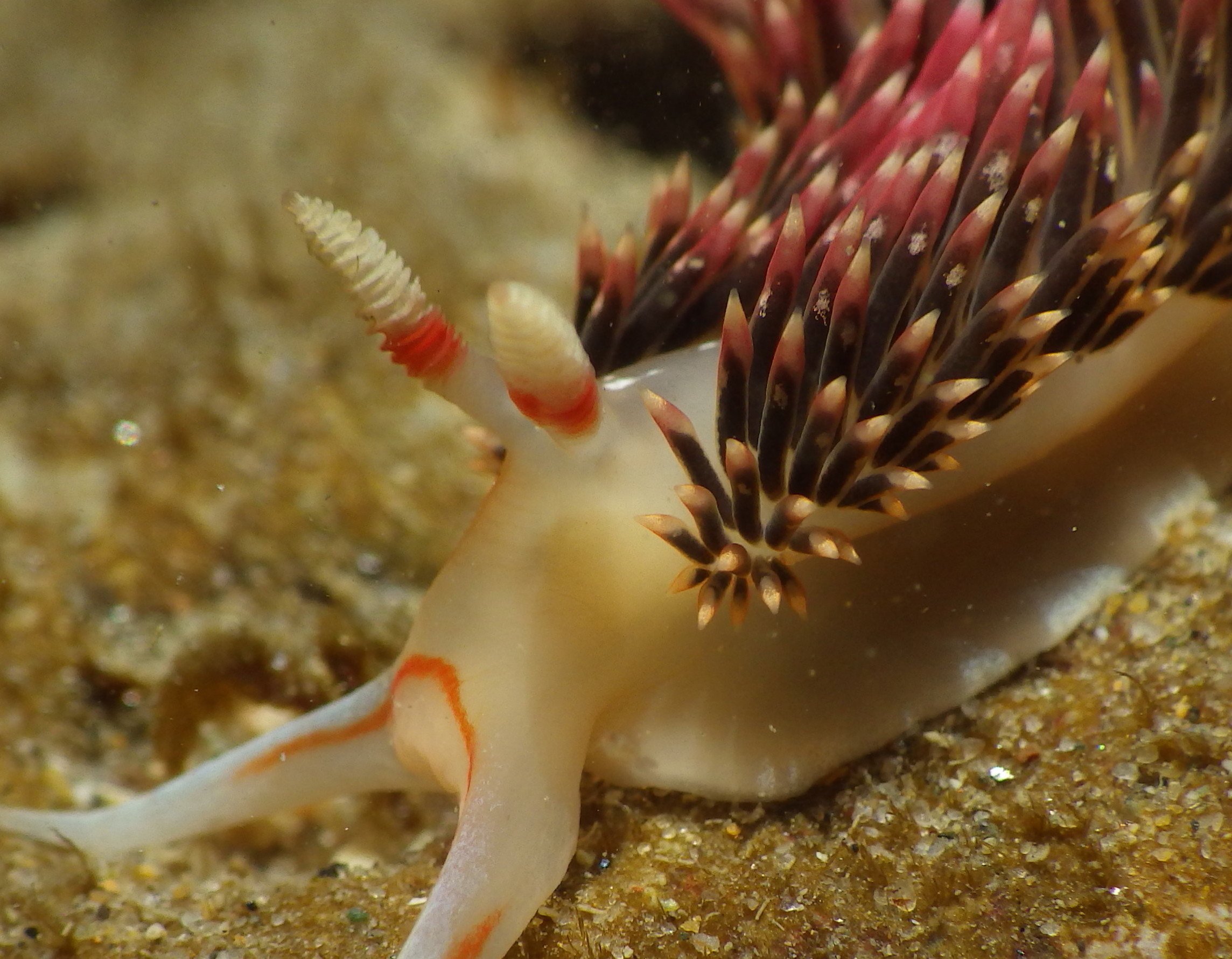Nudibranch range shift
A species of nudibranch sea slug is expanding its range northward along the California coast in response to warming ocean conditions.
Warmer ocean waters can cause marine animals like the nudibranch sea slug Phidiana hiltoni (P. hiltoni), found along the coasts of California and Mexico, to temporarily move north until temperatures cool down. As climate change drives ocean warming, these northward shifts may become permanent. For more information, download the Nudibranch Range Shift chapter.
Phidiana hiltoni is a striking and colorful marine animal that is easy to spot along the California coast. During their short lifespans of up to a year, they prey on aquatic invertebrates such as sponges, jellyfish, and in a few cases, other nudibranchs. The map shows its northernmost locations along the California coast before 1975 and since 2015.


Credit: Jeffrey Goddard
What does the indicator show?
- P. hiltoni moved north along the California coast by 130 miles since the 1970s. It used to inhabit the coastline from Baja California Sur to the Monterey Peninsula, but by 2015 it was found as far north as Bodega Bay, where it remains today (map above).
Why is this indicator important?
- The movement of small, short-lived marine animals like P. hiltoni into new habitats can have major impacts on local ecosystems. For example, its arrival along the northern coast has caused a decline in resident nudibranch populations that it preys on and competes with for resources.
- Range shifts can provide important insights into how marine animals are responding to climate change. A species like P. hiltoni that undergoes a permanent range shift may foreshadow how other species will respond to changing ocean conditions.
What factors influence this indicator?
- Marine organisms generally respond to unusually warm ocean temperatures by shifting their distributions farther north to cooler waters. During El Niño events, warm coastal waters and changes in the movement of ocean currents are associated with northward range expansions of nudibranchs.
- An unprecedented “marine heat wave” occurred along the Pacific Coast from 2013 to 2016. Many marine species, including 25 nudibranchs, shifted their distributions farther north during this period.
Additional resources
- iNaturalist, Hilton’s Aeolid
- University of California Natural Reserve System, Marine Heatwave Pulled Tropical Species North
